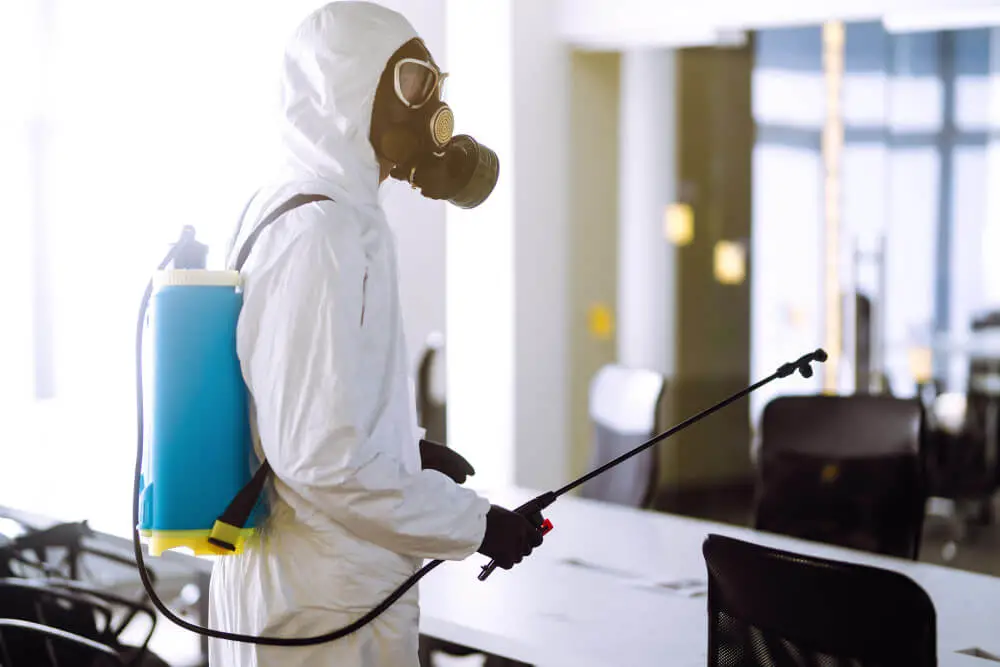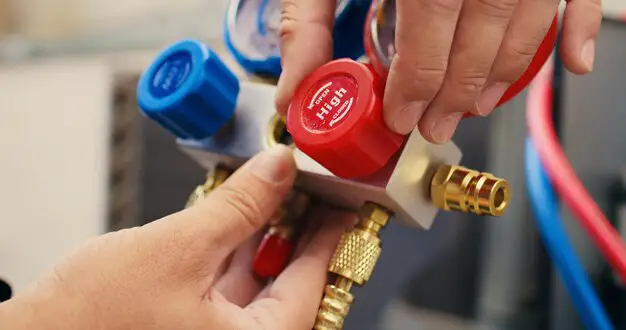Bug bombs, or foggers, are commonly used to combat insect infestations. These aerosol cans release a fog that spreads throughout the room, targeting pests hiding in cracks and crevices. While bug bombs can effectively eliminate bugs, they often leave behind a residue that raises questions for many homeowners. How long does bug bomb residue last? Let’s delve into this mystery and uncover the answers.
The Society of Environmental Toxicology and Chemistry states that residues from bug bombs can persist for as long as a year despite adhering to correct procedures like evacuating people and pets and adequately covering surfaces and items.
Bug bomb residue refers to the leftover particles and chemicals that settle on surfaces after using a fogger. These residues can contain active ingredients, such as pyrethroids or pyrethrins, commonly found in insecticides and toxic to insects. The duration of bug bomb residue can vary depending on several factors, including the type of insecticide used, the concentration of the active ingredients, and the conditions of the environment.
Factors That Affect the Duration of Bug Bomb Residue

Type of Insecticide:
The insecticide used in bug bombs significantly determines how long the residue will last. Different insecticides have varying chemical properties and formulations, which can affect their persistence on surfaces. Some insecticides break down more quickly, resulting in shorter residue durations, while others may linger for an extended period.
Concentration of Active Ingredients:
Bug bombs come in various strengths, with different concentrations of active ingredients. Higher concentrations of insecticides may leave behind more persistent residues compared to lower concentrations. It’s essential to read the product label to understand the concentration of the active ingredients and their potential impact on residue duration.
Environmental Conditions:
Environmental factors, such as temperature, humidity, and ventilation, can influence how long bug bomb residue lasts. Higher temperatures and humidity levels can accelerate the breakdown of insecticides, potentially reducing residue duration. Conversely, lower temperatures and limited airflow may contribute to longer-lasting residues.
How to Clean Up Bug Bomb Residue – 3 Steps to Follow
Now that you have a better understanding of bug bomb residue and the factors that affect its duration, it’s crucial to know how to clean it up properly. Follow these three steps to ensure a thorough and safe cleanup process.
Ventilate the Area:
Start by opening all windows and doors to allow fresh air to circulate. This step helps remove any lingering fumes and dissipate the bug bomb residue. Use fans or turn on ventilation systems to improve airflow within the space.
Wipe Down Surfaces:
Grab a bucket of warm water and add a mild detergent or a household cleaner to create a cleaning solution. Use a clean cloth or sponge to wipe down all surfaces, including countertops, furniture, walls, and floors. Pay extra attention to areas where the bug bomb was released, and spots frequently touched, such as doorknobs and light switches. Rinse the cloth or sponge regularly to avoid spreading the residue.
Vacuum and Mop the Floors:
After wiping down surfaces, it’s essential to vacuum and mop the floors thoroughly. Use a vacuum cleaner with a HEPA filter to capture any residual insecticide particles that may have settled on the carpet or rugs. Mop hard floors with a solution of warm water and a floor cleaner to eliminate any remaining residue. Be sure to empty the vacuum cleaner bag or canister outside to prevent recontamination.
Expert Advice on Bug Bomb Residue

To gain further insights into bug bomb residue and its implications, we turned to Dr. Emily Johnson, an entomologist with over 15 years of experience in pest management. According to Dr. Johnson, “The duration of bug bomb residue can vary greatly depending on the specific product used and the conditions of the environment. It’s important to carefully read and follow the instructions provided by the manufacturer to minimize any potential risks associated with the residue.”
Dr. Johnson advises homeowners to consider alternative pest control methods, such as targeted sprays or baits, which may have a lower likelihood of leaving behind residues. She also emphasizes the significance of proper cleanup procedures, stating, “Thoroughly cleaning surfaces, vacuuming, and mopping after using a bug bomb can help minimize the potential exposure to residual insecticides.”
My Opinion
Bug bomb residue can linger long after the initial fogging, but the duration varies based on the insecticide type, concentration of active ingredients, and environmental conditions. Understanding these factors is crucial for homeowners seeking effective pest control solutions while minimizing potential risks.
By following the proper cleanup steps, including ventilation, wiping down surfaces, and thorough floor cleaning, you can mitigate the presence of bug bomb residue in your home. Remember always to read and follow the instructions provided by the manufacturer to ensure safe and effective pest management.




